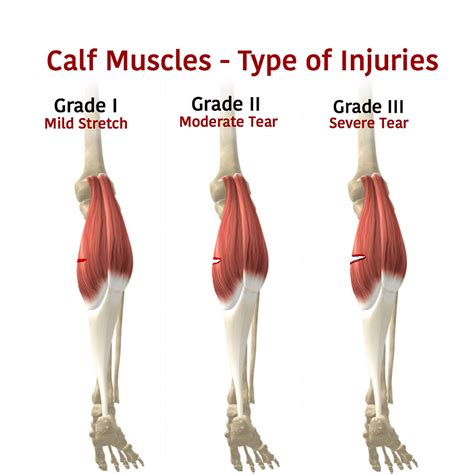Intro
A strained calf muscle can be a painful and frustrating injury, especially for athletes and individuals who engage in regular physical activity. The calf muscles, which include the gastrocnemius and soleus muscles, play a crucial role in movements such as walking, running, and jumping. When these muscles are strained, it can lead to a range of symptoms, from mild discomfort to severe pain and limited mobility. In this article, we will delve into the world of strained calf muscles, exploring the causes, symptoms, treatment options, and prevention strategies.
The importance of understanding and addressing strained calf muscles cannot be overstated. For athletes, a strained calf muscle can mean the difference between winning and losing, or even worse, a prolonged period of recovery. For non-athletes, a strained calf muscle can impact daily activities, making it difficult to perform simple tasks such as walking or climbing stairs. Furthermore, if left untreated, a strained calf muscle can lead to chronic pain and long-term damage, emphasizing the need for prompt and effective treatment.
The prevalence of strained calf muscles is a common phenomenon, affecting individuals of all ages and fitness levels. Whether you're a professional athlete or a weekend warrior, the risk of straining your calf muscles is ever-present. This is due to the fact that the calf muscles are subjected to a significant amount of stress and strain, particularly during high-impact activities such as running and jumping. Additionally, factors such as poor footwear, uneven surfaces, and inadequate warm-up routines can all contribute to the risk of straining your calf muscles.
Understanding Calf Muscle Strains

A calf muscle strain occurs when the muscle fibers in the calf are stretched or torn, leading to inflammation and pain. This can happen suddenly, such as during a sports game, or gradually, over a period of time. The severity of the strain can vary, ranging from mild to severe, and is often classified into three grades. Grade 1 strains are the mildest, characterized by minor pain and limited mobility. Grade 2 strains are more severe, with moderate pain and noticeable swelling. Grade 3 strains are the most severe, with significant pain, swelling, and limited mobility.
Causes of Calf Muscle Strains
The causes of calf muscle strains are numerous and varied. Some of the most common causes include: * Overuse or repetitive strain * Sudden contraction or stretch * Poor footwear or training surfaces * Inadequate warm-up or cool-down routines * Muscle imbalances or weaknesses * Poor biomechanics or running techniqueSymptoms of Calf Muscle Strains

The symptoms of a strained calf muscle can vary depending on the severity of the injury. Common symptoms include:
- Pain or tenderness in the calf
- Swelling or bruising
- Limited mobility or stiffness
- Weakness or fatigue in the calf
- Pain when walking or running
- Pain when stretching or contracting the calf
Diagnosing Calf Muscle Strains
Diagnosing a calf muscle strain typically involves a physical examination and medical history. A healthcare professional may perform a range of tests, including: * Palpation to assess pain and tenderness * Range of motion tests to assess mobility * Strength tests to assess muscle weakness * Imaging tests, such as X-rays or MRI, to rule out other conditionsTreatment Options for Calf Muscle Strains

Treatment for a strained calf muscle typically involves a combination of rest, ice, compression, and elevation (RICE). Additional treatment options may include:
- Pain relief medication, such as acetaminophen or ibuprofen
- Physical therapy to improve mobility and strength
- Orthotics or shoe inserts to support the foot and ankle
- Bracing or taping to provide additional support
- Surgery, in severe cases, to repair torn muscle fibers
Recovery and Rehabilitation
Recovery and rehabilitation from a calf muscle strain can take several weeks to several months. A typical rehabilitation program may include: * Phase 1: Rest and protection (0-2 weeks) * Phase 2: Mobility and strengthening (2-6 weeks) * Phase 3: Functional training and return to sport (6-12 weeks)Prevention Strategies

Preventing calf muscle strains requires a combination of proper training, equipment, and techniques. Some effective prevention strategies include:
- Warming up and cooling down properly
- Stretching and foam rolling the calf muscles
- Strengthening the calf muscles through exercises
- Wearing proper footwear and orthotics
- Avoiding overuse and repetitive strain
Conclusion and Final Thoughts
In conclusion, a strained calf muscle can be a painful and frustrating injury, but with proper treatment and rehabilitation, it is possible to make a full recovery. By understanding the causes, symptoms, and treatment options, individuals can take steps to prevent and manage calf muscle strains. Whether you're an athlete or a non-athlete, it's essential to prioritize calf health and take proactive measures to prevent injuries.We invite you to share your thoughts and experiences with calf muscle strains in the comments below. Have you ever suffered from a strained calf muscle? What treatment options worked best for you? Share your story and help others who may be going through a similar experience.
What are the most common causes of calf muscle strains?
+The most common causes of calf muscle strains include overuse or repetitive strain, sudden contraction or stretch, poor footwear or training surfaces, inadequate warm-up or cool-down routines, muscle imbalances or weaknesses, and poor biomechanics or running technique.
How can I prevent calf muscle strains?
+Preventing calf muscle strains requires a combination of proper training, equipment, and techniques. Effective prevention strategies include warming up and cooling down properly, stretching and foam rolling the calf muscles, strengthening the calf muscles through exercises, wearing proper footwear and orthotics, and avoiding overuse and repetitive strain.
What are the symptoms of a strained calf muscle?
+The symptoms of a strained calf muscle can vary depending on the severity of the injury. Common symptoms include pain or tenderness in the calf, swelling or bruising, limited mobility or stiffness, weakness or fatigue in the calf, pain when walking or running, and pain when stretching or contracting the calf.
